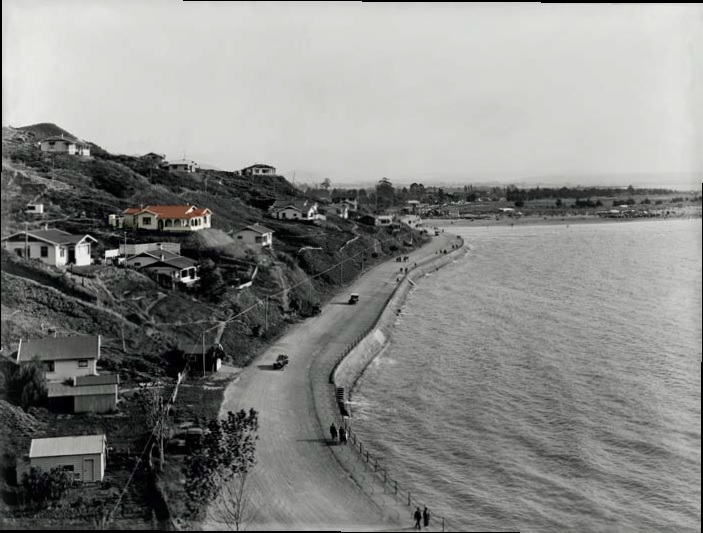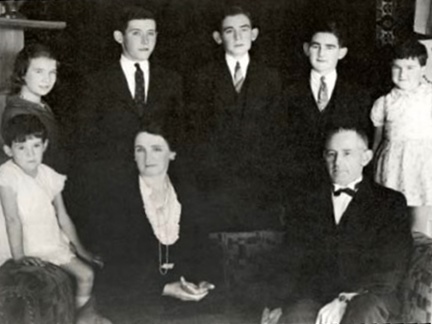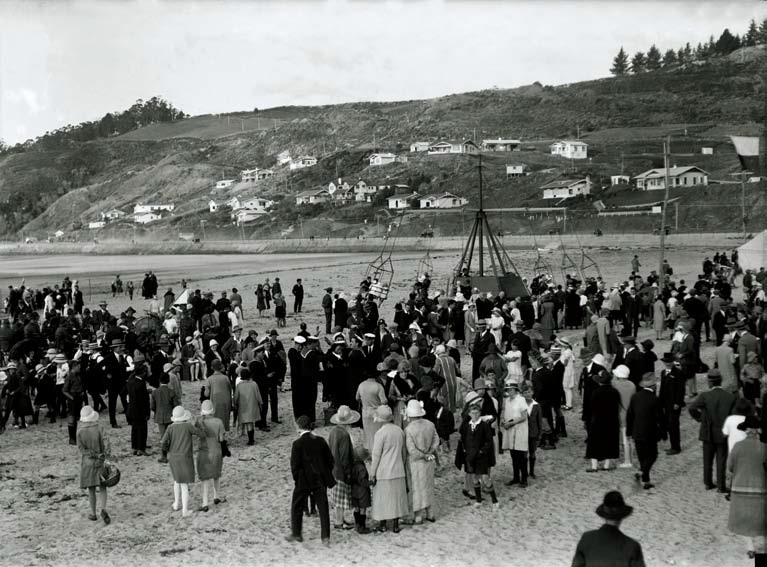Day's Track
The story behind the name When Edward Bisley subdivided the Tāhunanui hillside in the 1920s, Nelson’s Leonard Day built many of the new homes.
The story behind the name
When Edward Bisley subdivided the Tāhunanui hillside in the 1920s, Nelson’s Leonard Day built many of the new homes. Among his houses were those near the dirt track that led from Rocks Road to Grenville Terrace, and up over the hill to Toi Toi Street, Nelson. Len and his wife Agnes eventually built their own home on the hillside, above Rocks Road near the track. The couple were very social, encouraging their six children to bring friends home. The house became a well known and much appreciated gathering place.
Before Rocks Road was completed in 1899, a trip to the beach required people to either scramble around the Magazine Point rocks at low tide, drive their horse and cart over Bishopdale, or walk over the hill from Toi Toi Valley. The shortest walking route over the hill, through the Richmond family farm, soon became a track. When houses started to be built in the 1920s, shortcut tracks were formed all over the hillside. Few families owned cars in those days. Some shortcut tracks eventually became more formal, public walkways.
A path led up to the Day home, starting near the same place as the public track. The spot became the Magazine Point/Rocks Road bus stop. As the public dirt track was often very muddy, locals would walk up the Day property to avoid the mud, and then rejoin the public track further up the hill. This became known as ‘going up Day’s track’.
In time, passengers travelling by bus would request to be let off at ‘Days Track’. The name stuck, and now refers to the whole track from Rocks Road to Toi Toi Street.
From dirt track to concrete steps
In the early 1950s, Danish immigrant Agner (Tom) Zachariassen and work mate Leo Hansen installed a sewer line from Rocks Road to Edward Street (now Grenville Terrace). The work was done by hand, with concrete pipes carried up the track one at a time. Following completion, the track was concreted. Much of the early concrete work remains, including grooves formed across the path near Rocks Road. Also in the 1950s, drainage contractor Tom Zachariassen installed Tāhunanui’s large water main that ran from Princes Drive reservoir, down beside the track between Moana Avenue and Grenville Terrace, before running south. Remains of the old rusty pipe were unearthed during the 2011 slip.
Days track reopened
Following days of significant heavy rain, in December 2011, a section of Days Track between Grenville Terrace and Moana Avenue was destroyed by slips. It was rebuilt
and reopened in August 2017.
DAYS TRACK HERITAGE PANEL 2017 (updated 2021)
Story by: Janet Bathgate
Further Sources
Books
- Bell, C.W.(1979) Unfinished business: the second fifty years of the Nelson City Council. Nelson, N.Z.: Nelson City Council
http://www.worldcat.org/title/unfinished-business-the-second-fifty-years-of-the-nelson-city-council/oclc/34523816
Newspapers
- Clarke, V. (2017, September 13) Mosaic couch is a gesture of thanks by Nelson mosaic artists. Nelson Mail on Stuff:
https://www.stuff.co.nz/life-style/homed/latest/96772343/mosaic-couch-is-a-gesture-of-thanks-by-nelson-mosaic-artists - Moore, B. (2016, 26 February) Nelson council backs Days Track rebuild. Nelson Mail on Stuff.
https://www.stuff.co.nz/nelson-mail/news/77268396/nelson-council-backs-days-track-rebuild - Moore, B. (2012, January 18) Living on a slippery slope. Nelson Mail on Stuff:
http://www.stuff.co.nz/nelson-mail/lifestyle-entertainment/6225678/Living-on-a-slippery-slope - Sivignon, C. (2017, September 3) Reinstated days track officially opens on Tāhunanui hills at Nelson. Nelson Mail on Stuff:
https://www.stuff.co.nz/nelson-mail/our-people/96437434/reinstated-days-track-officially-opens-on-tahunanui-hills-at-nelson


